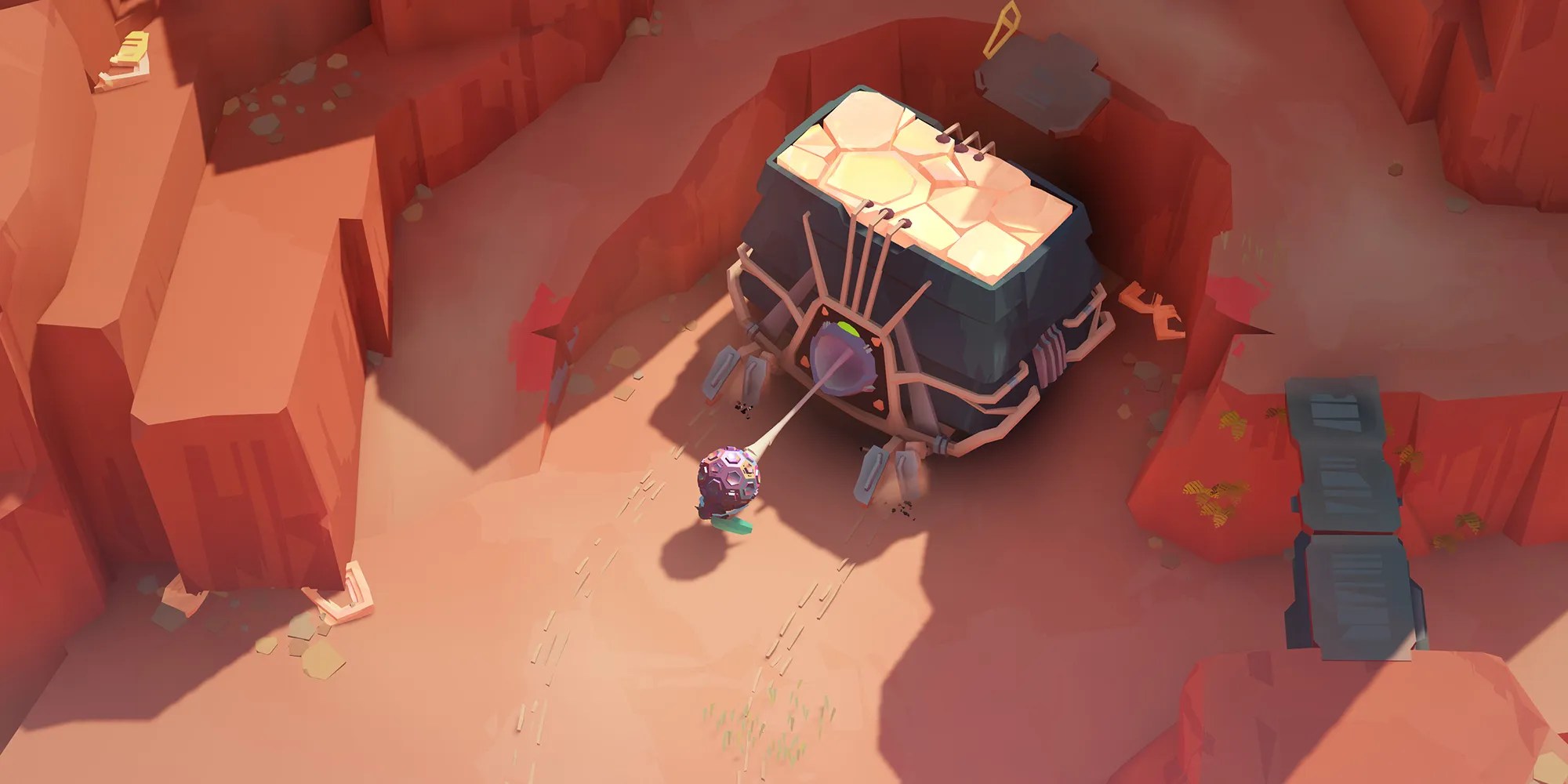Cocoon, Geometric Interactive’s first title, is a compelling and intuitive experience. Theindietitle sees players taking on the role of an insect-like, biomechanical explorer who must travel through a variety of worlds that can themselves become objects used to solve puzzles in other worlds. This nested-world mechanic leads to some mind-bending moments where players must jump through a hierarchy of different dimensions to progress.
Game Rant recently had the opportunity to speak with Jeppe Carlsen, founder of Geometric Interactive and lead designer ofCocoonabout the game’s development. A relatively short and sweet experience,Cocoonis conceptually and mechanically very tight, with no padding andquick pacing. During the interview, Carlsen revealed that careful editing allowed the game to maintain its momentum, at the cost of an elaborate vehicular sequence that was cut from the game’s organic world.

The Discarded Doldrums
Jeppe Carlsen and Erwin Kho, the game’s art director, laughed as they described thecut content, recalling the months of work they put into the set piece before it had to be axed. Carlsen explained that the sequence revolved around an unorthodox vehicle:
“There was an organic vehicle with a very long legs that you could climb and park on these different islands. On each island there would be puzzles to solve. And when you finished the puzzles, there would be a winged key that you could slot in to this creature. Eventually, the creature would split apart and fly out of a cave.”

It wasn’t all wasted work, mercifully. Kho pointed out the final part of the sequence still appears in the game’s organic cave section, but the long-legged walking platform vehicle is no more. Unlike most ofCocoon, which follows a tight sequence of puzzles to progress, players were able to tackle the different isles in any order. Thisnon-linear part of the storyproved challenging from an art perspective, as each island needed to be distinct enough to be engaging, but familiar enough that players could easily recognize where they needed to go next.
The real reason Carlsen finally pulled the plug, however, is that he realized it derailed the game’s momentum. When speaking about a playtest with someone fromAnnapurna Interactive,Cocoon’s publisher, Carlsen was able to guess exactly where the player stalled in their progress. As soon as Carlsen confirmed the tester ran out of steam in the walker section with the islands, he knew the sequence had to go.

Pace Perfect
Pacing is more complicated than the tempo of mechanics, or how quickly a player must react to accomplish their goal. Games thatsuffer from uneven pacingoften stem from tonal shifts that betray the core design philosophy of a game. InCocoon,that core design component is rapidly switching between different universes, using mazes as tools to solve other mazes, as Carlsen explained:
“Part of the magic inCocoon,I think, is that you very rarely continue in one world for very long before you have to continue in another world. All these context shifts of progressing in a different landscape are essential forCocoon’s pacing to work.”
Bearing those context switches in mind, it is easy to see how switching from a neat sequence of puzzles to a more open-ended exploration of a single world would stall gamers' interests. There is a design tendency inimmersive open-world gamesto provide players with the widest volume of content possible, but inCocoonwhere every mechanic is reused in a distinct way in a different environment, lingering in one world feels disappointing.
Carlsen revealed that he rarely playsextremely difficult puzzle gamesand has limited interest in ‘state engines’ that force players to search through a staggering number of conditional permutations to find a single correct configuration. He acknowledged it was partially a matter of preference, but he also observed that games had trouble adequately paying off all the effort associated with state engines.
Less Is More
There are other obvious upsides to trimming fat from titles. Carlsen points out that shedding the sequence made the game slightly easier to produce, and this intentional leanness can also be found in thepuzzle game’s minimalist control scheme. By limiting the complexity of the controls to a single navigation stick and a single interaction button, the heady concepts of shuffling through different dimensions becomes intuitive.
In the end, doing away with the walker vehicle while maintaining the sequence’s conceptual and thematic pay-off allowed the game to become a better version of itself. While it may seem counter-intuitive, shortening a title can make the overall experience much more fulfilling.
Cocoonis available now for PC, Switch, PlayStation 4, PlayStation 5, Xbox One, and Xbox Series X|S.
MORE:Star Ocean: The Second Story R Dev Details New Combat and QOL Features Coming to the Remake